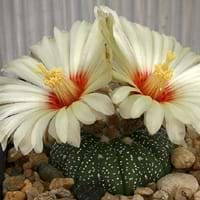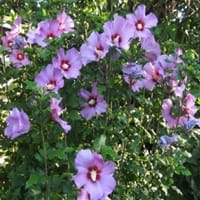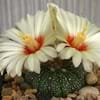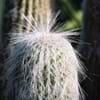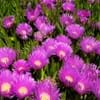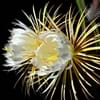Life Span
Perennial
Perennial
Type
Cactus, Flowering Plants
Shrub
Origin
Mexico, Texas
Australia
Types
Not Available
Not available
Habitat
Desert, In desert grasslands, Rocky areas
subtropical regions, Temperate Regions, Tropical regions, Warmer regions
USDA Hardiness Zone
13-15
9-11
Sunset Zone
21,22,23,24
H1, H2, 13, 14, 15, 16, 17, 20, 21, 22, 23, 24
Habit
Oval or Rounded
Upright/Erect
Minimum Height
Not Available
Minimum Width
Not Available
Flower Color
Red, Yellow
Blue, Purple, Blue Violet
Flower Color Modifier
Not Available
Not Available
Fruit Color
Green, Pale Pink
Not Available
Leaf Color in Spring
Not Available
Dark Green
Leaf Color in Summer
Not Available
Dark Green
Leaf Color in Fall
Not Available
Dark Green
Leaf Color in Winter
Not Available
Dark Green
Leaf Shape
Not Applicable
Irregular
Plant Season
Not Available
Spring, Summer, Fall, Winter
Sunlight
Not Available
Full Sun
Growth Rate
Not Available
Medium
Type of Soil
Not Available
Clay, Loam, Sand
The pH of Soil
Not Available
Acidic, Neutral, Alkaline
Soil Drainage
Not Available
Well drained
Bloom Time
Not Available
Indeterminate
Repeat Bloomer
Not Available
Yes
Tolerances
Not Available
Not Available
Where to Plant?
Ground
Ground, Pot
How to Plant?
Seedlings, Transplanting
Seedlings, Semi-hardwood cuttings
Plant Maintenance
Medium
Medium
Watering Requirements
Needs very little water
Average Water Needs, Do Not over Water, Requires regular watering
In Summer
Lots of watering
Lots of watering
In Spring
Moderate
Moderate
In Winter
Average Water
Average Water
Soil pH
Not Available
Acidic, Neutral, Alkaline
Soil Type
Not Available
Clay, Loam, Sand
Soil Drainage Capacity
Not Available
Well drained
Sun Exposure
Not Available
Full Sun
Pruning
Remove damaged leaves, Remove dead branches, Remove dead leaves
Remove damaged leaves, Remove dead branches, Remove dead leaves
Fertilizers
All-Purpose Liquid Fertilizer
All-Purpose Liquid Fertilizer
Pests and Diseases
Dry root rot, Root mealy bugs
Red blotch, Rust aphids
Plant Tolerance
Drought
Not Available
Flower Petal Number
Not Available
Single
Showy Fruit
Not Available
No
Edible Fruit
Not Available
No
Fragrant Flower
Not Available
No
Fragrant Fruit
Not Available
No
Fragrant Leaf
Not Available
No
Fragrant Bark/Stem
Not Available
No
Showy Foliage
Not Available
Yes
Showy Bark
Not Available
No
Foliage Texture
Bold
Medium
Foliage Sheen
Not Available
Matte
Invasive
Not Available
No
Self-Sowing
Not Available
Yes
Attracts
pollinators
Butterflies, Flying insects, Hummingbirds, Insects
Allergy
Not Available
Not Available
Aesthetic Uses
Beautification, Showy Purposes
Borders, Showy Purposes, small hedge
Beauty Benefits
Not Available
Not Available
Environmental Uses
Air purification
Air purification
Medicinal Uses
Not Available
High blood pressure, lowering blood pressure
Part of Plant Used
Flowers
Flowers, Leaves
Other Uses
Used as Ornamental plant
Decoration Purposes
Used As Indoor Plant
Yes
Yes
Used As Outdoor Plant
Yes
Yes
Garden Design
Not Available
Container, Feature Plant, Hedges, Mixed Border, Rock Garden, Wall
Botanical Name
Astrophytum asterias
ALYOGYNE huegelii 'Monle'
Common Name
Star Cactus, Sand Dollar Cactus
Blue Hibiscus, Purple Delight Blue Hibiscus
In Hindi
रेत डॉलर कैक्टस
Blue Hibiscus
In German
Sand Dollar Cactus
Blauer Hibiskus Baum
In French
Sand Dollar Cactus
Bleu Hibiscus Arbre
In Spanish
Sand Dollar Cactus
Azul árbol del hibisco
In Greek
Sand Dollar Cactus
Μπλε Hibiscus Tree
In Portuguese
Cacto do dólar de areia
Árvore azul do hibiscus
In Polish
Sand Dollar Cactus
Niebieski Hibiscus Drzewo
In Latin
Sand Dollar Cactus
Hibiscus lignum blue
Phylum
Magnoliophyta
Magnoliophyta
Class
Magnoliopsida
Magnoliopsida
Order
Caryophyllales
Malvales
Family
Cactaceae
Malvaceae
Genus
Astrophytum
Alyogyne
Clade
Angiosperms, Core eudicots, Eudicots
Angiosperms, Eudicots, Rosids
Subfamily
Cactoideae
Malvoideae
Number of Species
Not Available
Properties of Sand Dollar Cactus and Blue Hibiscus
Wondering what are the properties of Sand Dollar Cactus and Blue Hibiscus? We provide you with everything About Sand Dollar Cactus and Blue Hibiscus. Sand Dollar Cactus doesn't have thorns and Blue Hibiscus doesn't have thorns. Also Sand Dollar Cactus does not have fragrant flowers. Sand Dollar Cactus has allergic reactions like Not Available and Blue Hibiscus has allergic reactions like Not Available. Compare all the properties and characteristics of these two plants. Find out which of these plant can be used as indoor plant. If you are interested to decorate your house and garden, find out aesthetic uses, compare them and select the plant which will beautify your surrounding. Along with beautification, try comparing medicinal and edible uses of Sand Dollar Cactus and Blue Hibiscus and you can choose the plant having best and most benefits.
Season and Care of Sand Dollar Cactus and Blue Hibiscus
Season and care of Sand Dollar Cactus and Blue Hibiscus is important to know. While considering everything about Sand Dollar Cactus and Blue Hibiscus Care, growing season is an essential factor. Sand Dollar Cactus season is Not Available and Blue Hibiscus season is Not Available. The type of soil for Sand Dollar Cactus is Not Available and for Blue Hibiscus is Clay, Loam, Sand while the PH of soil for Sand Dollar Cactus is Not Available and for Blue Hibiscus is Acidic, Neutral, Alkaline.
Sand Dollar Cactus and Blue Hibiscus Physical Information
Sand Dollar Cactus and Blue Hibiscus physical information is very important for comparison. Sand Dollar Cactus height is Not Available and width Not Available whereas Blue Hibiscus height is 120.00 cm and width 120.00 cm. The color specification of Sand Dollar Cactus and Blue Hibiscus are as follows:
Sand Dollar Cactus flower color: Red and Yellow
Sand Dollar Cactus leaf color: Not Available
Blue Hibiscus flower color: Blue, Purple and Blue Violet
- Blue Hibiscus leaf color: Dark Green
Care of Sand Dollar Cactus and Blue Hibiscus
Care of Sand Dollar Cactus and Blue Hibiscus include pruning, fertilizers, watering etc. Sand Dollar Cactus pruning is done Remove damaged leaves, Remove dead branches and Remove dead leaves and Blue Hibiscus pruning is done Remove damaged leaves, Remove dead branches and Remove dead leaves. In summer Sand Dollar Cactus needs Lots of watering and in winter, it needs Average Water. Whereas, in summer Blue Hibiscus needs Lots of watering and in winter, it needs Average Water.
